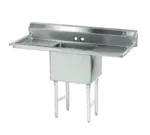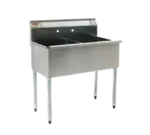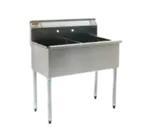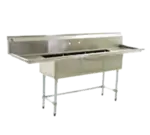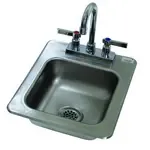
Common Food Safety Terms Explained
A lot of factors go into the safety of your food production, and understanding every single aspect of it is important to determine the needs of your facility and meet standards of public health and safety.
Part of knowing the ins and outs of food service is familiarizing yourself with terminology. This will help you navigate the industry better and ultimately identify the level of knowledge and training your staff needs in order to successfully contribute to the success of the overall operation through their roles.
What is the difference between food sanitation and food safety?
Before we dive deep into that, let’s first hone in on the term “food sanitation”. What is food sanitation exactly? The specific phrase found in a number of research and literature is often used to refer to the set of practices involved in preventing food from becoming unsafe for consumption due to microbial contamination.
“Food safety” and “food sanitation” are often clumped together because they do go hand in hand, but they cannot substitute for each other. In the context that the common phrase “food safety and sanitation” is often used, “sanitation” is usually meant to focus on maintaining hygiene and the cleanliness of the equipment and the facility in which food production is done.
Food safety is described as the bigger picture--the entire system of practices that encompasses the proper methods of food handling, preparation, and storage designed to prevent the risk of foodborne illnesses. Food sanitation can be considered as a facet of food safety that comes with its own set of procedures meant to deliver specific results.
In short, food sanitation is practiced in service of food safety. There are several ways food can become unsafe, and one of them is improper food sanitation.
Although it is only a single entry in the food safety checklist, food sanitation is definitely high up on that list. It not only involves keeping your food prep and cooking equipment safe for use but also implementing different cleaning methods the right way.
Diving deeper into the concept of food sanitation, let’s talk about the different procedures of cleaning, which seem to be another cause for confusion too.
Cleaning vs Sanitizing vs Disinfecting: Caring For The Physical Environment
Food sanitation is accomplished by performing several methods of cleaning. Naturally, you can expect words like “sanitation” and “disinfection” thrown in this conversation. These terms are often used interchangeably, but there are differences that should be noted.
Cleaning, sanitizing, and disinfecting are three different things, and you absolutely need to do all of them in your foodservice establishment. If you intend to disinfect, you cannot opt for a sanitizer to get the job done.
Cleaning is fundamental
Cleaning sounds like wiping the tables or sweeping the floor--and it’s exactly that. Cleaning means removing visible dirt such as spills and debris and impurities like organic matter and allergens to make the facility more comfortable for everyone and less welcoming to pests like rodents and cockroaches.
Cleaning is the first step to food sanitation and a necessary one at that. This process affects the efficacy of your efforts as you move on to more involved and potent methods. Disinfectants and sanitizers will not be able to effectively break through a surface with a food or grease buildup. Cleaning mainly involves the use of soapy water and detergents as well as cleaning supplies and equipment such as a microfiber cloth, squeegee, and vacuum cleaner.
So what is sanitizing or sanitation and why is it important then?
Well, a surface may be clean, but it doesn’t mean it is sanitary. The goal of sanitizing is to lower the occurrence and growth of bacteria and contaminants to a safe level as per the health and safety standards. Sanitation requires a clean surface to be fully effective.
Sanitizing is routinely performed on food prep and food contact surfaces that are unlikely to be exposed to dangerous bacteria that would otherwise require more potent chemicals. Tabletops, cutting boards, countertops, and kitchen utensils are among the items that are often sanitized.
Despite being a bit more involved than cleaning, sanitizing is actually performed quite often throughout the day. Sanitize the area before and after a food prep task. When you’re switching between different types of food, sanitize that cutting board or work surface. So in a busy commercial kitchen, it makes a glaringly huge difference to choose products that take effect in a short dwelling time.
For items like dinnerware, a commercial sink helps you move through the process of cleaning and sanitizing in a safer and hygienic way. Commercial dishwashers offer a more convenient way to go through stacks of dirty dishes. If you end up with a large number of plates at the end of the day, dish tables are great for keeping dirty and clean dishes segregated.
Disinfect vs Sanitize vs Sterilize
If sanitizing eliminates 99.9 percent of germs, disinfecting will get rid of all of them. Disinfecting is a powerful decontamination process in which pathogens, bacteria, fungi, and viruses like the coronavirus and flu virus are completely destroyed. CDC notes that disinfecting will not kill bacterial spores.
Since it is a targeted approach, disinfecting is typically done in high-touch and high-traffic areas like doorknobs, handles, light switches, and handrails as well as vulnerable areas like the restroom. Bleach, alcohol, and chlorine are some disinfectants used in foodservice.
Disinfecting is carried out once a day, but during flu season or outbreaks such as the coronavirus pandemic, it pays to do it more frequently than usual to better protect your staff and your guests from infectious disease. Keep in mind that a disinfected surface that is touched by hands, sneezed on, or coughed on can still harbor new germs, so it is important to disinfect it regularly.
Sterilizing for maximum annihilation
According to the CDC, sterilizing involves killing all forms of microbial life, which includes the microbial spores, which are some of the more stubborn and resistant bodies formed by microorganisms. Sterilizing can be described as an extreme method of disinfection, accomplished with the use of steam under pressure, dry heat, and liquid chemicals among many others. This is a process usually done in healthcare settings.
Using Sanitizing, Disinfecting, and Cleaning Chemicals Safely
By understanding the difference between cleaning, sanitizing, disinfecting, and sterilizing, you are able to make smarter and more informed decisions in the products that you use in your facility. Look for the products with an EPA registration number to ensure safe use and effectiveness. Here are some tips:
- Pay attention to the dwell time or how long the product needs to sit on the surface to effectively reduce or kill the amount of germs it is touted to.
- Many foodservice chemicals are designed for general applications, but there are specialized products required for unique needs and uses such as for equipment like commercial ice machines, soft service ice machines, and coffee machines that come into contact with food served to your customers. Some areas of your facility may need a specific or more potent chemical such as the restroom.
- Sanitizers are designed to reduce illness-causing bacteria by 99.999 percent within a minute and destroy common bacterial pathogens such as Staph. aureus and E. coli. Many can also be used to reduce other types of pathogens. Make sure to check the label to ensure that they are effective for your specific application.
- Disinfectants are categorized into three types. “General disinfectants” are recommended for common foodservice applications as they can kill most bacteria, germs, and pathogens. “Limited disinfectants” are often advised for use against more specific microorganisms. The third type called “hospital-grade” is primarily used in healthcare settings. In foodservice, it may be considered too much, although these disinfectants can be ideal when dealing with extreme cases or outbreaks.
- Opt for eco-friendly and less hazardous materials to prevent additional health risks.
- Make sure that your staff is trained for the proper use of foodservice chemicals. It is important to follow the instructions on the product label. Health hazards could arise due to erroneous concentration. Wear proper protective garments such as gloves and masks when needed, especially when using stronger chemicals.
How Your Equipment Can Make A Difference
Thanks to the advancing technology and the drive and creativity of manufacturers to innovate, you can find commercial restaurant equipment that truly simplify food sanitation and cleaning procedures so you can keep your facility safe and squeaky clean with minimal effort. For one, many of the commercial ice makers you will find make refrigeration components much more accessible and easy to remove so they can be cleaned and sanitized thoroughly. Features like an automatic cleaning system have also been developed to reduce the need for manual cleaning procedures.



